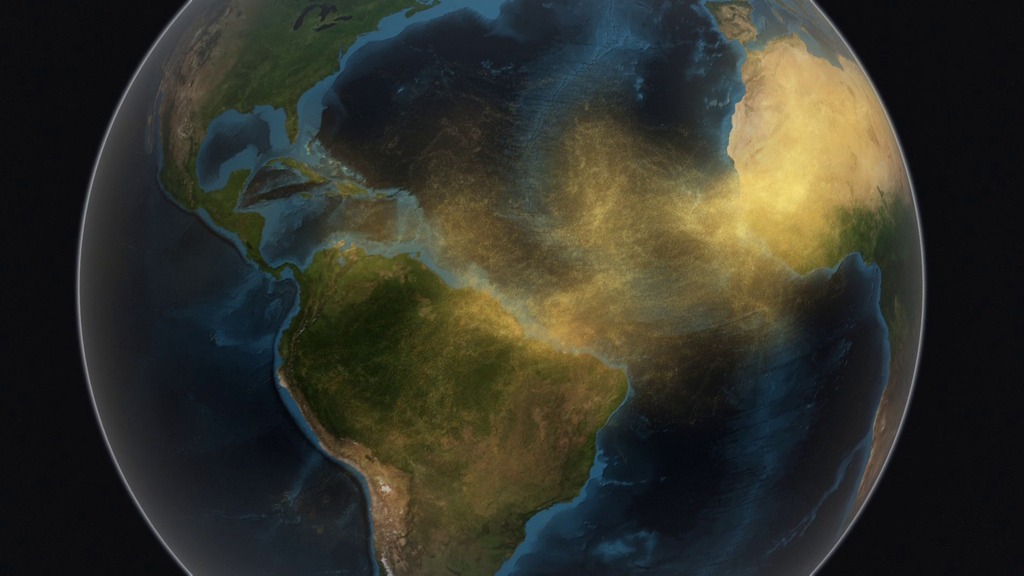Dust Crossing

What connects Earth's largest, hottest desert to its largest tropical rain forest?
The Sahara Desert is a near-uninterrupted brown band of sand and scrub across the northern third of Africa. The Amazon rain forest is a dense green mass of humid jungle that covers northeast South America. But after strong winds sweep across the Sahara, a tan cloud rises in the air, stretches between the continents, and ties together the desert and the jungle. It’s dust. And lots of it. Now, for the first time, NASA’s CALIPSO satellite has quantified in three dimensions how much dust makes this trans-Atlantic journey. Among this dust is phosphorus, an essential nutrient that acts like a fertilizer, which the Amazon depends on in order to flourish. The study is part of a bigger research effort to understand the role of dust and aerosols in the environment. Watch the video to learn more.
The crossing of Saharan dust to South America is the largest transport of dust on the planet. Find out more in this video.

NASA’s CALIPSO satellite collects "curtains" of data (above) that reveal information about the altitude of dust layers in the atmosphere.

Satellite observations show that wind and weather pick up on average 182 million tons of Saharan dust each year.

A portion of the dust travels across the Atlantic Ocean to South America, where 27.7 million tons fall to the surface over the Amazon basin.
For More Information
See NASA.gov
Credits
Please give credit for this item to:
NASA's Goddard Space Flight Center
-
Animators
- Brian Monroe (USRA)
- Kel Elkins (USRA)
- Greg Shirah (NASA/GSFC)
- Horace Mitchell (NASA/GSFC)
-
Scientist
- Hongbin Yu (JCET UMBC)
-
Interviewee
- Hongbin Yu (JCET UMBC)
-
Narrator
- Joy Ng (USRA)
-
Producers
- Kayvon Sharghi (USRA)
- Joy Ng (USRA)
-
Writer
- Ellen T. Gray (ADNET Systems, Inc.)
Release date
This page was originally published on Thursday, February 26, 2015.
This page was last updated on Wednesday, May 3, 2023 at 1:49 PM EDT.

